RARE! WWII 1944 Operation Market Garden DROP ZONE N 82nd Airborne Artifact COA
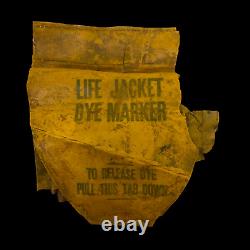
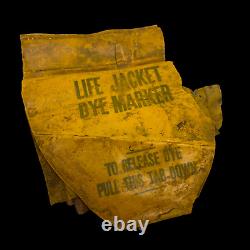

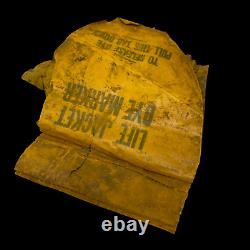
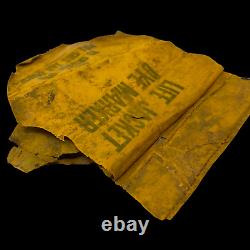
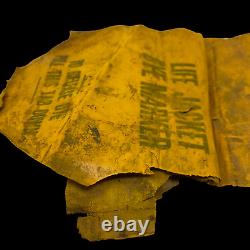
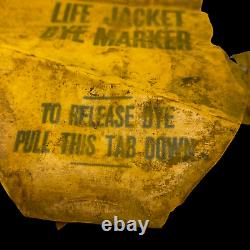
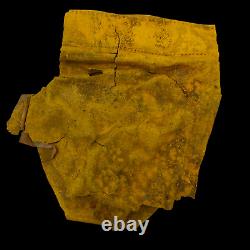

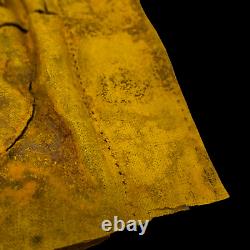

This incredibly rare and museum-grade artifact is a very well preserved piece of a. Mae West life vest used by the 505th Parachute Infantry Regiment during the September 1944 airborne dropping during Operation Market Garden. The 505th Parachute Infantry Regiment was. One of four infantry regiments of the. Was recovered near'DROP ZONE N just south of Groesbeek. The main targets for the 82nd Airborne Division were; the bridges at Grave, Malden, Heumen, Hatert, Honinghutje and the ultimate goal, the Waal bridges (rail- and road bridge) at Nijmegen. Reinforcements were supposed to land on drop zone N and T today and if the Germans were able to capture the drop zones it would become a massacre.
The entire 505th was ordered to defend drop zone N and was able to do that successfully. The 508th had to call back all its troops from Nijmegen and the Maas-Waal canal to retake drop zone T. They had to fight against a German fighting force of 500 men, supported by 20mm guns.
At 14.00 hours, the men of the 508th were able to retake drop zone T. Each paratrooper of the 82nd Airborne Division's. 505th Parachute Infantry Regiment was issued a Mae West life vest to be worn from the departure from England to their designated drop zones. These vests were meant to be used a life preserves and inflated if shot down over the ocean, or landing in a flooded area in the region. Early in the afternoon the paratroopers of the 82nd Airborne Division jumped on the drop zones at Groesbeek, Overasselt and Grave.
Elements of the 504th Parachute Infantry Regiment (PIR) jump from their C-47's on Drop zone O minus Company E, which jumped on a special drop zone just west of the Grave bridge. Together they were assigned to capture the bridge. Elements of the 505th Parachute Infantry Regiment together with engineers from the 307th Airborne Engineers Battalion jumped on Drop zone N just south of Groesbeek. The 508th was assigned to Drop zone T, located just north-east of Groesbeek at the Wylerbaan. Main targets for the 82nd Airborne Division were; the bridges at Grave, Malden, Heumen, Hatert, Honinghutje and the ultimate goal, the Waal bridges (rail- and road bridge) at Nijmegen.The 505th was confronted with some enemy resistance but were quickly able to repulse the attacks and secure the area. The Grave bridge was also taken swiftly by paratroopers of E-504 PIR, lead by First Lieutenant John Thompson. In the evening he would lead his troops into Grave, which was abandoned by the enemy. In the afternoon the 376th Parachute Field Artillery Battalion landed on DZ-N at Klein-Amerika and gliders landed at Overasselt carrying elements of Lt-Gen Frederick Browning's headquarters. Browning acted as the XO for the First Allied Airborne Army, led by Lt-Gen Lewis Brereton.
His job was to coordinate the operations of the three airborne divisions in the corridor. He decided to land with the 82nd Airborne Division at Overasselt, so he could place his HQ in the middle of the three airborne divisions that were active during Market Garden. While the main force of the 505th formed a defensive line against German attacks at Mook and the 508th made its way to Nijmegen to seize the Waal bridge, elements of the 504th and 505th were able to capture 1 of the 4 bridges (3 were assigned targets for Marget Garden) over the Maas-Waal canal. The bridge at Hatert and Malden were blown up by the Germans, while the bridge at Heumen was captured intact. With the bridge at Grave and Heumen captured intact, XXX-corps was able to reach Nijmegen. Because of a misunderstanding between the commander of the 508th, Colonel Roy Lindquist and the Division Commander Brig-Gen. James Gavin, the bridge at Nijmegen wasn't captured on the first day. Lindquist secured the drop zone, the high ground north of Groesbeek and established two roadblocks on the edge of Nijmegen quickly. Gavin ordered that if the 508th achieved its goals within the first few hours of the operation, a battalion should be sent towards the Waal bridge in Nijmegen to try and seize it. At 20.30 hours troops of Company A and B of the 508th were sent towards the bridge, but they were stopped by the Germans just 400 yards from the bridge. The bridge at Nijmegen would not be captured on the first day of Market Garden.
